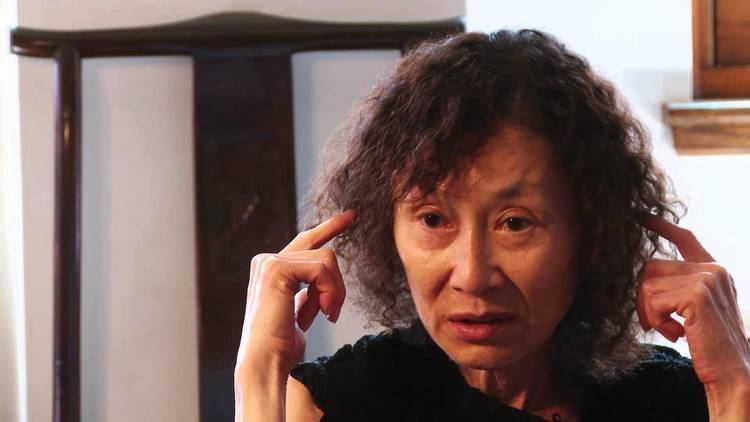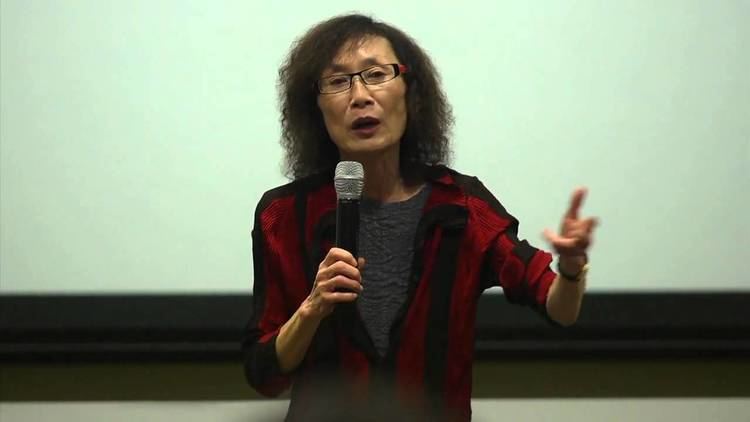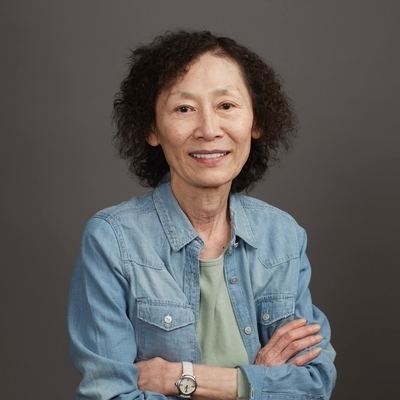Other names Chai Ming Huei Hanyu Pinyin Name Christine Choy | Occupation Film maker Role Cinematographer Chinese 崔明慧 | |
 | ||
Known for Who Killed Vincent Chin? (1988) Movies Who Killed Vincent Chin?, Best Hotel On Skid Row Education Columbia Graduate School of Architecture, Planning and Preservation, American Film Institute Awards Guggenheim Fellowship for Creative Arts, US & Canada Nominations Academy Award for Best Documentary Feature Similar People Renee Tajima‑Pena, Peter Davis, Michelle Parkerson, Larry Banks, Nick Doob | ||
Mountain Morning Show - Legal Smuggling with Christine Choy
Christine Choy (born 1952), also known as Chai Ming Huei, is a Korean American film maker.
Contents
- Mountain Morning Show Legal Smuggling with Christine Choy
- Q a with director christine choy at smc
- Early life
- Career
- Awards
- Filmography
- References

Q a with director christine choy at smc
Early life

Choy was born in Shanghai, China. Her mother is from China and her father is from Korea. For the most part, Choy was raised by her mother, because her father abandoned the family shortly after Choy's birth to return to his original home in South Korea. Growing up, the mother and daughter struggled financially. Following the Cultural Revolution, the family fled mainland China via Hong Kong. They moved to South Korea, where Choy was reunited with her father. During this time, Choy developed a strong appreciation for American films released in South Korea. Although she enjoyed the films, Choy noticed there was discrimination towards the Asian people in American films. Sometime in her teen years, Choy was given a scholarship to attend Manhattanville College of the Sacred Heart in New York, where she studied architecture. While attending, she made friends with a group of hippies that were a part of Newsreel. At Newsreel, Choy worked as an editor and animation director for some amount of time.
Career
In 1974, Choy directed her first documentary, which was called Teach Our Children. After working at Newsreel, she moved to a branch called Third World Newsreel. Because Choy was able to relate to the poverty and the migration issues that people around her faced, she was inspired to make another documentary, that fused the issues she faced while back in China and South Korea with the struggles she faced in the U.S. She finished the film, From Spikes to Spindles, in 1976. This film focused on Chinese migration, and focused on Chinese citizens being treated equally.
Choy was one of the first major Chinese American woman film makers. She is seen in both negative and positive light by her viewers. She is considered a political film maker and an activist.
One of Choy's most acclaimed films, Who Killed Vincent Chin? (1988) is a multicultural film that was nominated for an [Academy Award] for best documentary.[1] She codirected this film with Renee Tajima. The film is based on a true story about Vincent Jen Chin, a Chinese American man who was murdered by white men, in Detroit, who were sentenced to three years in prison each plus a $3,000 fine. Choy struggled in seeking funding for this film due to its high tension subject matter. The film was a pioneer in reconfiguring ethnographic filmmaking and won several accolades.
Choy is well acclaimed for making another film dealing with minority discrimination. Sa-I-gu (1993), another film that Choy codirected, about the effect of the 1992 Los Angeles riots on the Korean American community there, directly deals with the racial animosity towards Asians in America, but more specifically Asian women.
After directing, Choy is now a professor at Tisch School of Arts in New York City. She teaches a course called "Directing the Thesis" to third year students. She also has teaching experience at Yale, Cornell, and Buffalo State University of New York.
